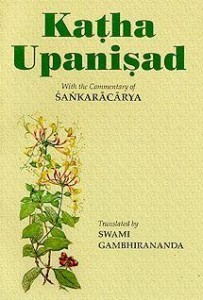
The Katha Upanishad is probably the most widely known of all the Upanishads. It was early translated into Persian. Through this rendering first made its way into Europe. Later Raja Ram Mohun Roy brought out an English version. It has since appeared in various languages. English, German and French writers have all agreed in pronouncing it one of the most perfect expressions of the religion and philosophy of the Vedas. Sir Edwin Arnold popularized it by his metrical rendering under the name of “The Secret of Death,”. Ralph Waldo Emerson gives its story in brief at the close of his essay on “Immortality.”There is no consensus of opinion regarding the place of this Upanishad in Vedic literature. Some authorities declare it to belong to the Yajur–Veda, others to the Sama–Veda. Though, a large number put it down as a part of the Atharva–Veda. The story is first suggested in the Rig–Veda; it is told more definitely in the Yajura–Veda; and in the Katha Upanishad it appears fully elaborated and interwoven with the loftiest Vedic teaching. However, there is nothing to indicate the special place of this final version. Nor has any meaning been found for the name Katha. The text presents a dialogue between an aspiring disciple, Nachiketas, and the Ruler of Death regarding the great Hereafter. From the book:
Fools dwelling in ignorance, yet imagining themselves wise and learned, go round and round in crooked ways, like the blind led by the blind. The Hereafter never rises before the thoughtless child (the ignorant), deluded by the glamour of wealth. “This world alone is, there is none other”: thinking thus, he falls under my sway again and again. There are many in the world, who, puffed up with intellectual conceit, believe that they are capable of guiding others. But although they may possess a certain amount of worldly wisdom, they are devoid of deeper understanding; therefore all that they say merely increases doubt and confusion in the minds of those who hear them. Hence they are likened to blind men leading the blind. The Hereafter does not shine before those who are lacking in the power of discrimination and are easily carried away therefore by the charm of fleeting objects. As children are tempted by toys, so they are tempted by pleasure, power, name and fame. To them these seem the only realities. Being thus attached to perishable things, they come many times under the dominion of death. There is one part of us which must die; there is another part which never dies. When a man can identify himself with his undying nature, which is one with God, then he overcomes death.
Download Katha Upanishad as a free PDF book here:


What is Kr in paypal? How to donate from India
Kr. means Danish Kroner, the currency here in the Kingdom of Denmark :-) Donations can be made in any currency you like.
Admin
One unavoidable lesson on life